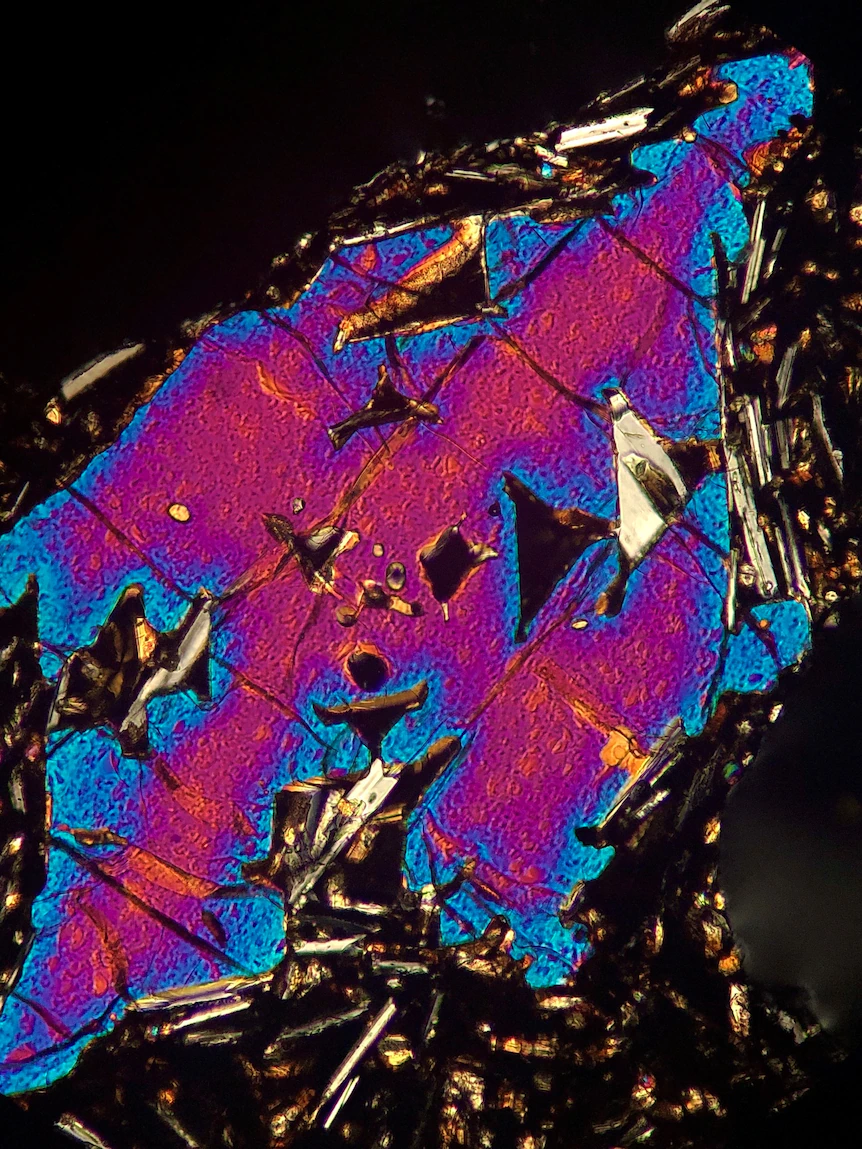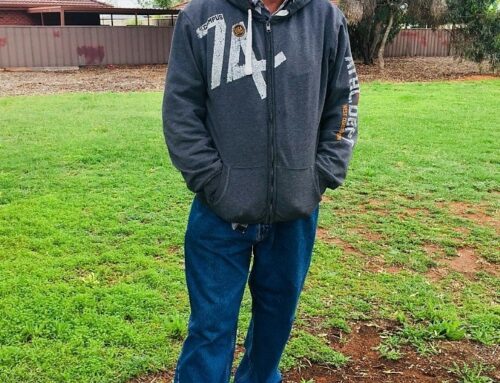These images may hold the key to understanding how much warning time there could be until one of Australia’s youngest volcanoes erupts again.
Key points:
- Researchers are looking at the crystals and minerals in volcanic rock around Mount Gambier
- They say the rocks may provide information about how much warning time there might be before an eruption
- While Mount Gambier and Mount Schank are considered volcanically active, but are unlikely to erupt again
Researchers are looking at tiny slivers of volcanic rock for clues to how quickly molten rock was forced to the surface when the volcanoes around Mount Gambier, in the south-east of South Australia and western Victoria, last erupted some 5,000 years ago.
Volcanologist Heather Handley, from Macquarie University, is also utilising Aboriginal knowledge to form a better idea of warnings before past eruptions.
These images show olivine —the most abundant minerals found in volcanic rocks collected around Mount Gambier and nearby Mount Schank.
“If you pick up a volcanic rock [around Mount Gambier], you might see those crystals as kind of a light-green, olive-green coloured crystal in the rock,” Dr Handley said.
Supplied: Heather Handley
)“We take a very thin slice of a rock, and the thickness of that slice is about half the thickness of a human hair, so it’s very thin — about 30 microns.
“What the temperature was like, what the pressure was, what the composition of the magma was like, did it interact with other magma?”
Clues to rock’s speedy trip to surface
Dr Handley said during the last eruption, magma would have travelled from at least 35 to 40 kilometres deep to the surface.
By understanding how fast it moved, researchers hope to establish how much warning time the community has before an eruption.
“So we know that to get that [skeletal] shape, you’re cooling quite fast. Then you can relate some of these shapes of the crystals to how fast it was moving towards the surface.”
Supplied: Heather Handley
)Dr Handley said while the Newer Volcanics Province was still considered volcanically active, it was unlikely Mount Gambier or Mount Schank would erupt again.
“What we’re trying to look at is, once things started to get going deep down in the earth, how fast did it then get to the surface and what’s the maximum warning time you could get?
Dr Handley said there had probably been at least 13 volcanic eruptions since humans arrived in Australia, but all prior to Europeans arriving on the mainland.
ABC South East SA: Bec Whetham
)“One thing that I’m really interested in as well is Indigenous knowledge or Aboriginal knowledge of volcanic eruptions in Australia,” she said.
“There are many oral traditions and stories associated with Australia’s young volcanic activity.”





